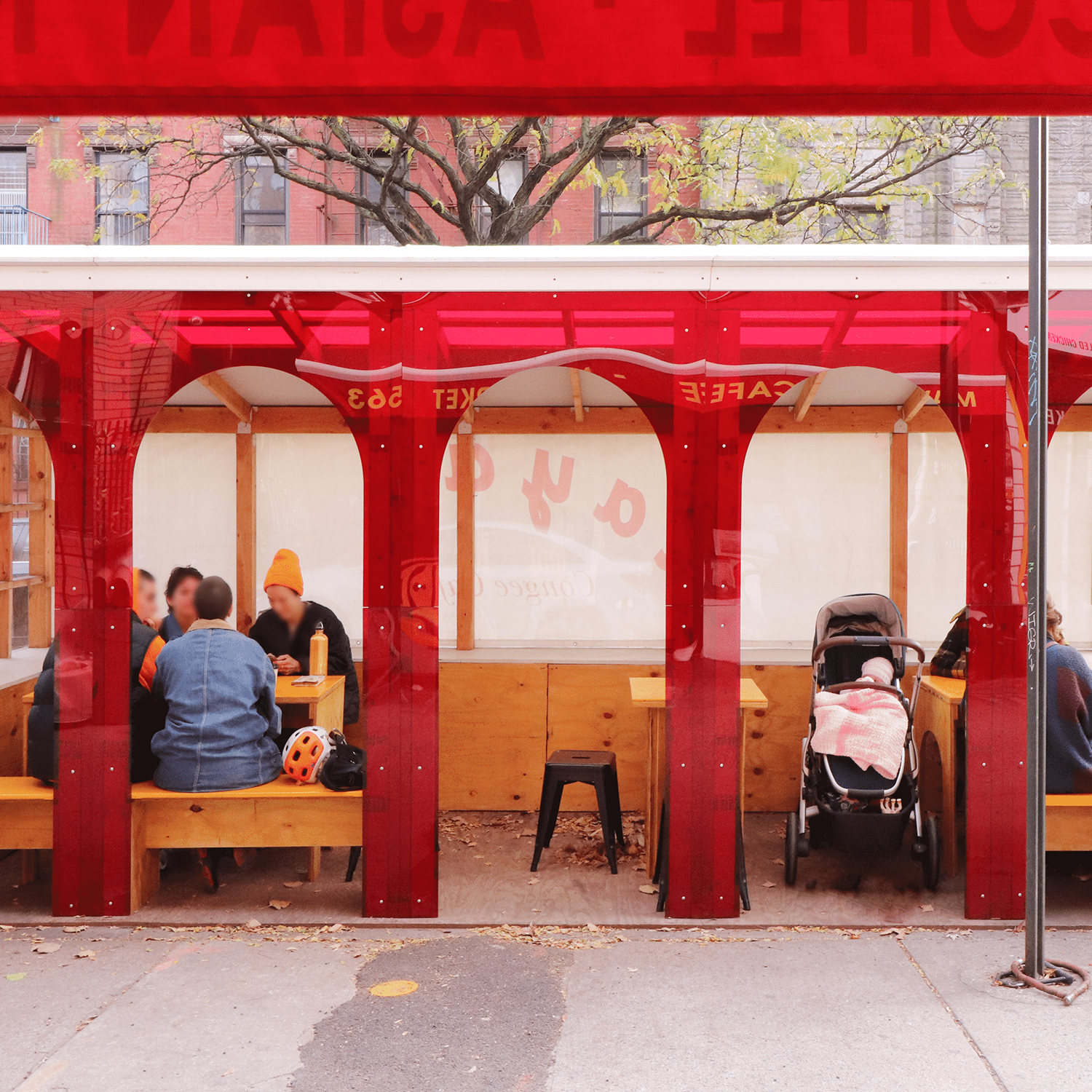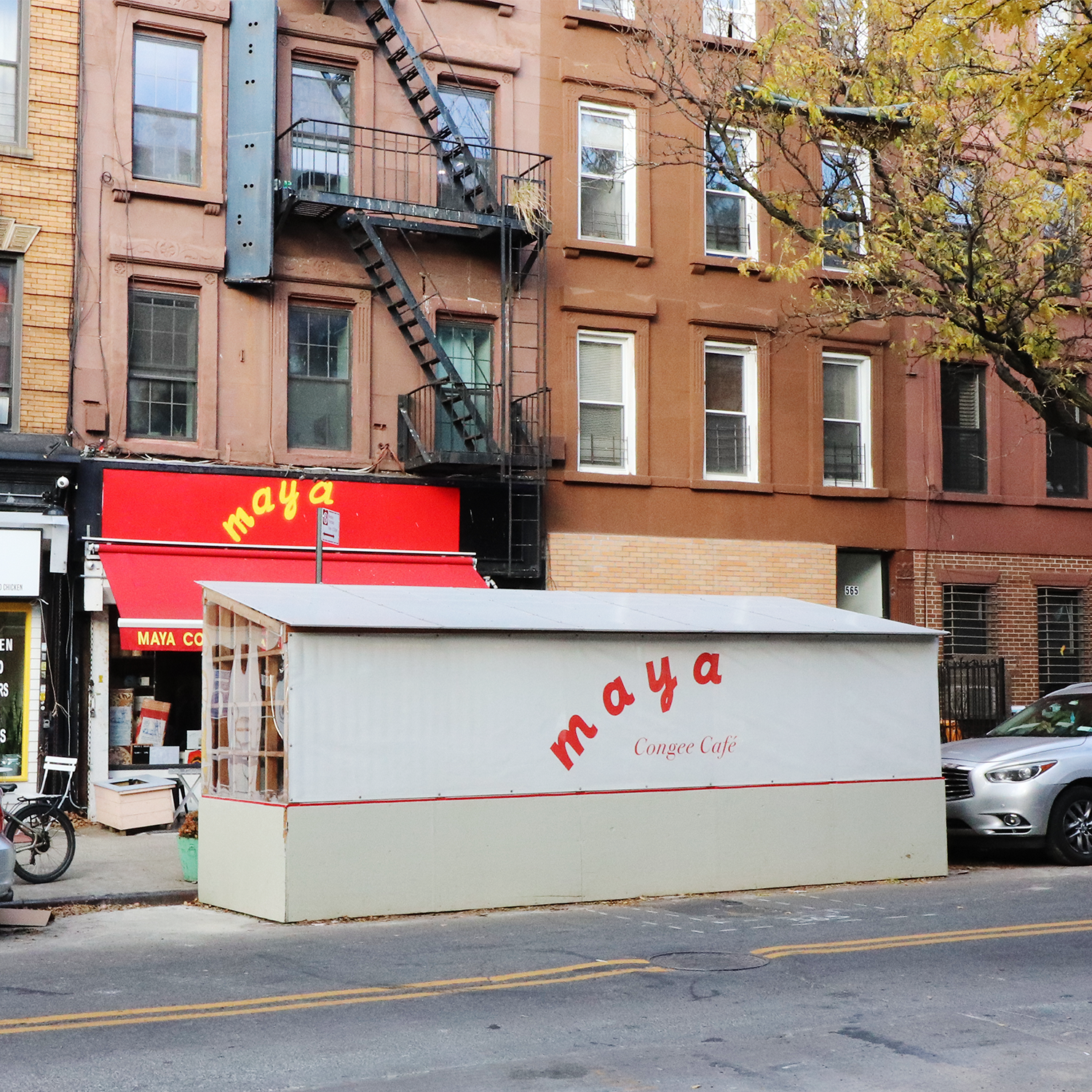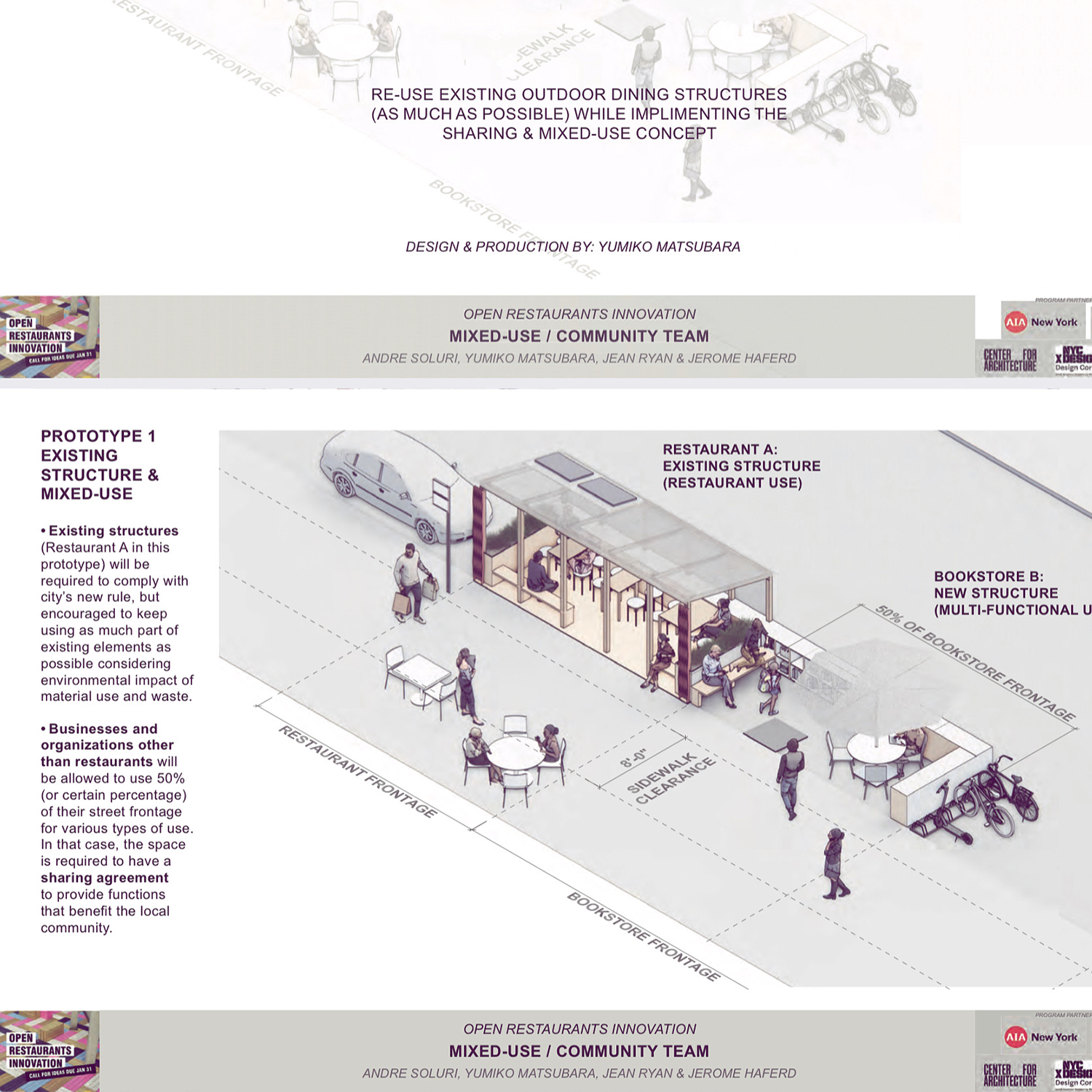Maya Congee Cafe, a small Asian cafe and grocery store in the Bed-Stuy neighborhood of Brooklyn, built a roadside outdoor dining space in 2021. Yumiko met the cafe owner Layla Chen through Design Corps, an online platform that connected restaurants, cafes, and bars with architects during the pandemic. Yumiko designed the structure as pro-bono work and Chaos Build, who also worked with minimum compensation, built it.
The completed structure has accommodated many customers and events since then. We ate congee, drank boba teas, played mahjong, and met new friends. Some of the design features we planned turned out well: benches that bisect the wall between the interior and the street side of the structure attracted passersby and customers alike. A half-opaque, half-translucent roof allowed us to sit on whichever side was more comfortable (either shaded or sunny) throughout the year. Plants grew on an open shelf we created to protect users from the traffic. There were also some unexpected troubles, especially in the early days. One day, people were partying in the space during the night and the owner received a call from the police. Another day, the structure blocked drainage and the street was flooded. The cafe solved these issues one by one.
August 3, 2024 was the deadline for some NYC restaurants to make decisions about their outdoor dining spaces. Food-service establishments that had erected outdoor dining sheds during the height of the pandemic now needed to apply for permits to keep those structures in place, or demolish them by August 3 – based on new protocols outlined under Dining Out NYC. One of the most controversial parts of the new outdoor dining rule is that roadside structures need to be demolished every year by the end of November, and businesses can then rebuild them after April.
Even though Maya’s project was completed at a relatively reasonable cost, it was still a large investment for the small cafe. In 2024, before the August 3 deadline, the owner decided to demolish the outdoor dining structure due to the amount of effort and cost needed to keep it under the new rules. On the morning of July 30, the owner, Chaos Build team and Yumiko met in front of the cafe to take the last photos before taking it apart. After a few photos were taken, we carried chairs and tables to the sidewalk. (We plan to use the furniture inside the cafe.) After furniture was cleared out, we looked at the empty structure. The owner sighed, “Oh this looks like it’s still in pretty good shape.” A manager from the restaurant next door came out and told us that she had been admiring? our structure when she looked outside from her place. A question came to my mind: So, why do we need to demolish this?
That was also what I was asked by many of my friends when I told them this story. In addition to the seasonal disassembly requirements I mentioned above, there are license fees, annual fees, and a security deposit required of each restaurant if they want to build an outdoor dining structure. How many small businesses would have the space and money to store a dining structure for months and rebuild it annually? Is it physically possible to stitch together structural components and lumber once they are disassembled? I expect many small businesses won’t be able to follow the new regulations.
Before this rule was finalized, a group of architects, advocates, and restaurateurs participated in the Open Restaurants Innovation Workshop in 2022 to discuss the future of outdoor dining spaces. This workshop was organized by AIANY in collaboration with many organizations including DOT and DOB. Maya Congee Cafe’s outdoor space was a participant in this workshop, where I had a chance to propose ideas and hear other people’s perspectives. The participants learned that many city residents and organizations had complaints about the noise of outdoor dining, the difficulty it posed for emergency vehicles passing through the streets, suspicion that dining sheds are incubators of rats, concerns many did not follow accessibility requirements, and others. The group of architects and advocates including myself presented possible future “prototypes” of outdoor dining spaces to the city at the end of this workshop. After over a year, some of those ideas were adopted, and the new program was announced.
Many workshop participants were aware that taking down structures every winter would be a significant hurdle for restaurants and would result in a large amount of construction waste. It still feels unfortunate that this point was not reflected in the final rule.
Despite their casual appearance, those structures can hurt people and public health if built improperly. Unfortunately, a large number of restaurants that did not follow construction regulations highlighted this concerning aspect of outdoor dining spaces. At the same time, we can see that many architects and builders took their responsibility seriously and created ingenious spaces, forming a completely new streetscape in NYC since the original program was launched in 2020. It is really sad to see them taken down. As we move onto the next stage of this outdoor dining journey, I hope the new program is enforced in a way that rewards the businesses, designers, and builders who sincerely follow the rules and try to contribute to the community.
(The original version of this article was published as Op-Ed submission by Yumiko on AIANY’s Oculus Magazine, Fall 2024 Issue.)




